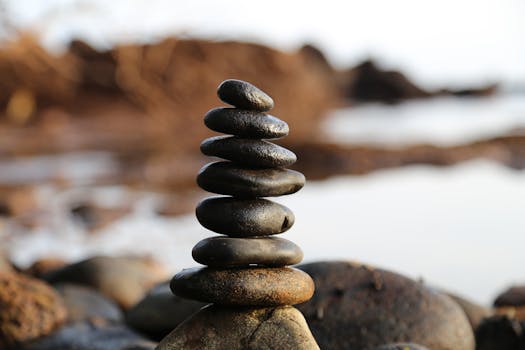
“
Mindfulness Practices for Stress Relief: A Guide to Inner Peace
Stress is an inevitable part of modern life, and it can have a significant impact on our mental and physical health. Mindfulness practices for stress relief have become increasingly popular in recent years, and for good reason. By cultivating mindfulness, we can learn to manage stress, reduce anxiety, and improve our overall well-being.
What is Mindfulness?

Mindfulness is the practice of being present in the moment, paying attention to our thoughts, feelings, and sensations without judgment. It involves cultivating a non-judgmental awareness of the present moment, which can help us to reduce stress, improve our relationships, and increase our overall sense of well-being.
Benefits of Mindfulness for Stress Relief

The benefits of mindfulness for stress relief are numerous. Some of the most significant advantages include:
- Reduced stress and anxiety
- Improved mood and emotional regulation
- Enhanced self-awareness and self-acceptance
- Increased focus and concentration
- Improved sleep quality
Mindfulness Practices for Stress Relief

There are many different mindfulness practices that can help to reduce stress and improve our overall well-being. Some of the most effective techniques include:
- Meditation: This involves sitting quietly, focusing on the breath, and observing thoughts and feelings without judgment.
- Yoga: This combines physical movement with deep breathing and meditation techniques to promote relaxation and reduce stress.
- Body scan: This involves lying down or sitting comfortably, and bringing awareness to different parts of the body, starting from the toes and moving up to the head.
- Walking meditation: This involves paying attention to the sensation of the feet touching the ground, the movement of the legs, and the rhythm of the breath while walking.
Tips for Incorporating Mindfulness into Your Daily Life

Incorporating mindfulness into your daily life can be simple and easy. Here are some tips to get you started:
- Start small: Begin with short periods of mindfulness practice, such as 5-10 minutes a day, and gradually increase the duration as you become more comfortable with the practice.
- Be consistent: Try to practice mindfulness at the same time every day, so it becomes a habit.
- Find what works for you: Experiment with different mindfulness practices to find what works best for you.
- Make it a ritual: Incorporate mindfulness into your daily routine, such as right after waking up or before bed.
Conclusion

Mindfulness practices for stress relief are a powerful tool for achieving inner peace and improving our overall well-being. By incorporating mindfulness into our daily lives, we can learn to manage stress, reduce anxiety, and increase our sense of calm and clarity. Whether you’re a beginner or an experienced practitioner, mindfulness is a journey that can benefit anyone, and we hope this guide has inspired you to start your own mindfulness practice.
See more:
https://www.mindful.org/
https://www.headspace.com/
https://www.calm.com/


